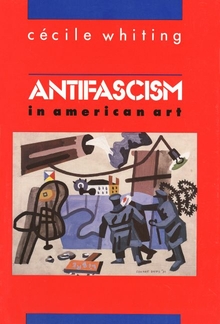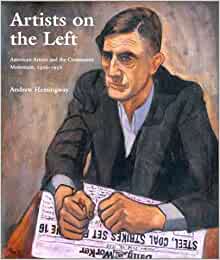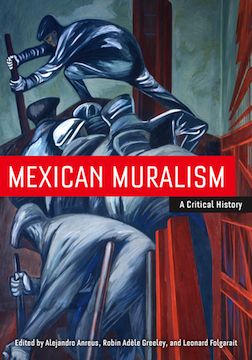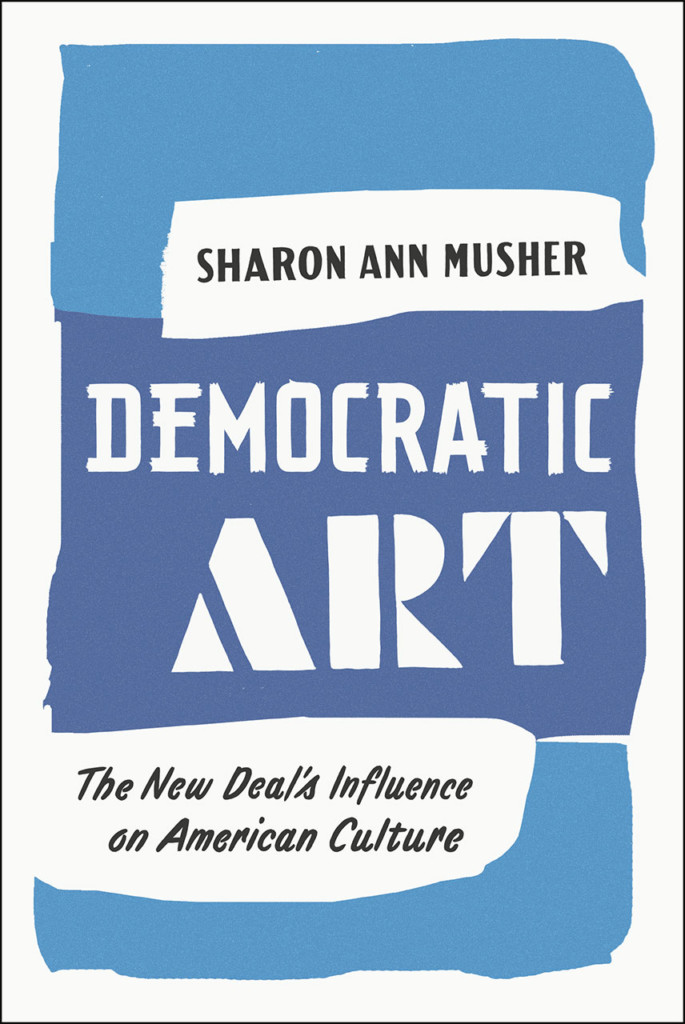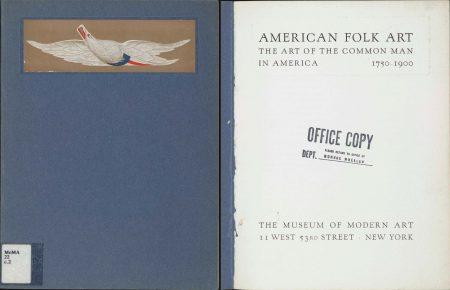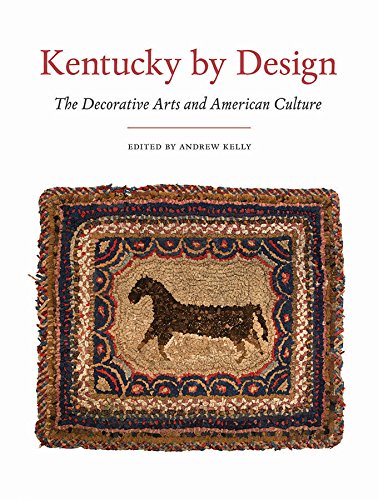We have reached the final list for my comprehensive exams: American art history. For the next few weeks, we’ll take a look at what I’ve been reading about art history, beginning with today’s post on the 1930s.
Many of the works I have been reading have delved into the political nature of 1930s American art. As both Cécile Whiting and Andrew Hemingway point out in their respective monographs, art historians have tended to understudy the art of the 1930s in favor of postwar art such as Abstract Expressionism. They posit that the art of the interwar period gets dismissed because it’s regarded as formally regressive and overtly political, rejecting the abstraction of the 1910s for a more conservative, social realist style. Yet as both authors point out, the seemingly timeless, individual aesthetic attributed to Abstract Expressionism is itself a historical idea, and simply dismissing the art of the 1930s as political and regressive oversimplifies the cultural complexity of this period. Just as Michael Denning argues in his seminal volume The Cultural Front that the creative output of the Popular Front was more innovative than traditionally believed, so these authors argue that the art of the 1930s is more aesthetically and politically complex than conventionally thought. So Whiting points out, for instance, that antifacist art could be as subtle as Stuart Davis creating abstractions inspired by jazz or electric signs, celebrating the vivacity and diversity of American culture. Likewise, Andrew Hemingway posits that not all artists were hardcore Communists during the 1930s, and that they engaged with leftist ideas to varying degrees.
While the majority of the books I’ve been looking at focus on the United States, I’ve also been reading about Mexican Muralism, since the work of Diego Rivera, David Siqueiros, and José Clemente Orozco, among others, significantly influenced both artists working in the United States and the federal government in terms of sponsoring a national art. As the authors contributing to the anthology Mexican Muralism point out, muralists had to navigate a lot of logistical and ideological challenges, including the negotiation between maintaining a radical art versus appeasing the interests of the state providing sponsorship. Indeed, Mary K. Coffey explores this question more deeply in her book, How a Revolutionary Art Became Official Culture, arguing that artists such as Orozco and Rivera underwent a conventionalizing process through their placement in museums. In other words, by commissioning artists to paint new works in museum spaces, institutions that have historically been associated with the state and official iterations of culture, the Mexican government endeavored to domesticate the more radical politics presented in Mexican muralism. Throughout the New Deal era, artists working in the United States faced similar issues. On the one hand, working in public spaces provides you the opportunity to express your messages to a wider audience. At the same time, however, when it’s the state that’s sponsoring you, it’s questionable whether you’ll be able to get any radical content out there. Indeed, a lot of critics of the New Deal at the time made this very argument regarding art, suggesting that art was better served when left to its own devices in a free market because it didn’t have to acknowledge or appease government oversight.
Given my interest in the New Deal, naturally a lot of the readings I’ve been looking at focus on the Federal Art Project, or share similar ideas. In Democratic Art, for instance, Sharon Ann Musher frames her study around the following questions: how did art advocates temporarily secure a New Deal for the arts, and what lessons does the past offer about government funding for the arts today? Looking at the political and cultural history underpinning the New Deal art movements, Musher goes beyond the standard critiques of middlebrow or radical content to explore the relationship between art and the state. Examining both renowned, federally-operated projects such as Federal One as well as smaller, more merit-based projects, Musher considers how the various institutions and projects associated with the New Deal functioned in society, and how both their critics and participants responded to them. Rather than lump them collectively into either conservative or liberal reactions, she instead considers local as well as national responses. Her discussions of community responses to various projects is particularly thorough, as when she describes different local reactions to community art centers. Rather than simply dismiss them as conservative or reactionary, she examines and identifies a variety of responses reflecting local politics, from the aversion toward nudity at the Phoenix Art Center, to the discomfort toward Communist politics at the Oklahoma City Art Center.
If Musher concentrates on the political aspects of the Federal Art Project, Victoria Grieve highlights the educational side of the FAP in her book, The Federal Art Project and the Creation of Middlebrow Culture. She argues that FAP administrators emphasized the importance of public art education and appreciation to the various art projects they sponsored, because they believed that educating citizens in art appreciation helped to cultivate a critically engaged citizenry. Influenced by the writings of John Dewey, John Cotton Dana, and other Progressive Era thinkers from the turn of the 20th century, she posits that art administrators believed that teaching citizens to critically engage works of art would influence other behaviors. In other words, teaching visitors to look at a painting and assess its quality by analyzing such formal aspects as line, shape, or color, would encourage them to be more proactive thinkers in other aspects of their life, because they were being taught to actively engage their surroundings. Additionally, teaching visitors to appreciate art would not only demystify it and make it appear more approachable, but would also encourage visitors to view themselves as art consumers, making them more likely to purchase works of art for themselves. In this way, the FAP served an economic as well as educational dimension, enabling an active approach to art appreciation that fed into both capitalist and democratic ideals. This book has been particularly influential in my own work up to this point, because Grieve talks explicitly about community art centers and their role in cultivating citizenship, not only through teaching art appreciation through exhibitions, but also through participatory, hands-on art-making classes.
Lauren Kroiz also reconsiders the significance of art education in the 1930s in her work Cultivating Citizens: The Regional Work of Art in the New Deal Era. Looking at the careers of Grant Wood, Thomas Hart Benton, and John Steuart Curry, she argues that education not only comprised a vital part of their work, but also reflects broader questions about art, citizenry, and the development of a distinctly American visual culture and identity. At the heart of this ongoing debate, according to Kroiz, is the question of who gets to teach art and its appreciation to the public, and by extension, use art to cultivate a more robust democracy. For Wood and Benton, artists should be the instructor because they possess the practical experience with the medium that enables them to pass that interest on to amateur makers. For art historians such as H.W. Janson, it is art historians who should be the primary teachers, as they can provide the historical and stylistic context to inform citizens while still enabling them the freedom to choose which styles to emulate. Museum directors and educators, in turn, argued that they were crucial because they possess the repositories of works that enable viewers to study them first-hand. More than petty conflicts between clashing personalities, Kroiz argues that the educational efforts surrounding Regionalist artists and their respective institutions reflect ongoing debates regarding the role of art education in the cultivation of an engaged, democratic citizenry. Although her work doesn’t specifically address the Federal Art Project per se, her focus on the pedagogy of Regionalism shares affinities with the FAP’s educational interests.
While the books I’ve been reading focus on what would be called the so-called fine arts, such as painting and sculpture, also been reading text focusing more explicitly on what we call folk art or vernacular art. Given my previous curatorial experience at Shelburne Museum, which is renowned for its vernacular art collection, I’ve been especially interested in exploring this topic more deeply. Among the texts I’ve been reading is the seminal catalog, Folk Art in America: Art of the Common Man, by Holger Cahill, future director of the FAP itself. Accompanying an exhibition of the same name that was held at the Museum of Modern Art in 1930, this project was one of the first shows to elevate such objects as trade signs, cigar-store figures, vernacular paintings, and other objects to the status of so-called fine art. Cahill’s curating and writing would prove immensely influential on the development of folk art as a field, and continues to inform us today. Reading this text is illuminating because you get to see what kinds of objects Cahill is designating as art, and just as importantly, what isn’t.
The omission of objects from the folk art canon it is a particularly driving theme in a related work, Kentucky by Design. This catalog accompanied an exhibition of the Kentucky submissions to the Index of American design, one of the FAP’s biggest undertakings. Consisting of thousands of illustrations hand-painted by American artists and illustrators, the index attempted to document American design through a selection of vernacular objects such as textiles, furniture, toys, and so forth. Yet as numerous scholars have pointed out, the Index, while claiming to offer a comprehensive view of American visual culture, was in fact highly selective. The vast majority of its objects originated from Eurocentric immigrant cultures, for instance, while works originating from Native American or African American traditions were essentially ignored. While Cahill argued he wanted to avoid repetition because Native American objects were already being documented through ethnographic projects, the mere designation between ethnographic object and fine art is illuminating, offering insight into the ways that the Federal Art Project classified different visual cultures. In other words, American works originating from a European tradition were more likely to be regarded as art, whereas works coming from indigenous cultures were labeled as artifacts. All of these observations remind me of one of the first books I read for comps, Sorting Things Out, which argues that for every designation made in a classification, something has to get left out.
Since I’m interested in the Community Art Center Project, all of these readings are also relevant to what I’ll be working on. Even if I’m not addressing post office murals directly, or overtly political art, it’s important to be familiar with the visual culture of the period, and how it might have influenced the selections made in the Community Art Center Project exhibitions. I’ll definitely be keeping all of these works in mind as I start putting together my own prospectus.
